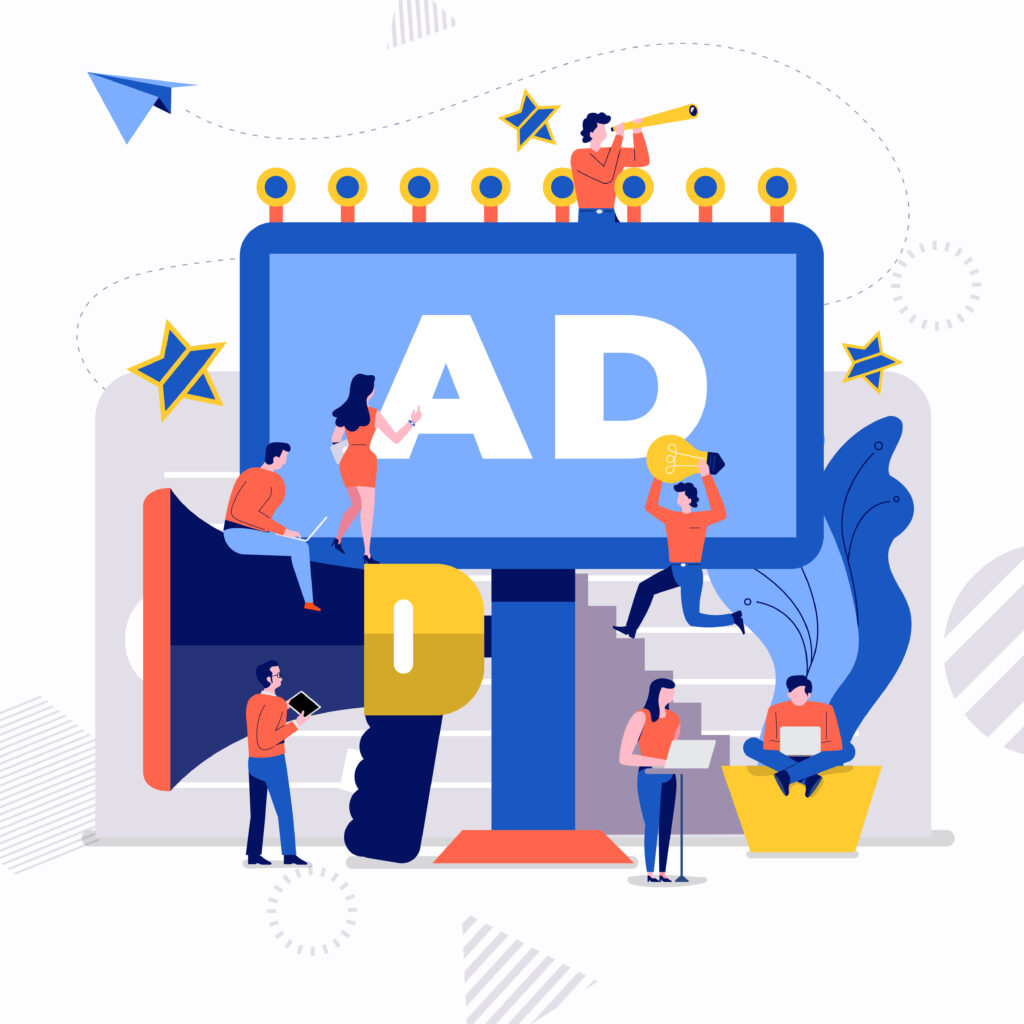I’m a firm believer in the notion that one of the most effective ways of learning a new skill is to hear experienced people talk about how they approach it. Even if you don’t fully agree with what they do, you’re bound to gain some valuable insights.
That’s why I’ve decided to share my knowledge about paid ads, because that’s the area I specialise in. I’ve managed paid advertising campaigns for hundreds of companies and helped them earn millions in revenue with an average of 5.3x ROAS since starting my ads agency, Snowball Creations, so I like to think I’m reasonably qualified when it comes to the matter of paid advertising campaigns.
That’s why I decided to walk you through a step-by-step process that I like to follow when coming up with a paid advertising strategy. I’ve also been making videos where I do this in real-time, with real-life companies. One of my favourites is this one, where I chat about how I would approach paid ads for Elon Musk’s company, Starlink. So, if blog posts aren’t for you, maybe give that a watch. And if you’re a reader rather than a watcher, then keep reading!
Step 1: get to know the business
A common pitfall that many people experience the first time that they run ads is that they assume what works for others will work for them, but that’s simply not true. Even if a specific paid advertising strategy worked for your friend, it could fail if you implement it.
Businesses are like snowflakes – each one is unique. That’s why you need to tailor your ad campaign to your specific business and target audience, and the best way of doing this is to understand your business on a deep level.
This may sound kind of stupid. After all, if it’s your business, don’t you already know it inside out? While that may be true in theory, getting to know your business in terms of paid advertising requires a lot of niching down into specific areas.
Figure out what your business is
The first thing you need to do is have a really clear picture of what your business is. Are you an e-commerce company? Do you dabble in the SaaS industry? Are you solely online or do you have physical locations too? What is it you sell?
These are just a few of the questions you will need to ask and answer if you want to get to the root of the business. Trust me, all of this will come into play later, because the type of business you have will affect every aspect of your paid advertising strategy.
Research, research . . . and more research
If you’re running paid advertising for another company, the way I do for my clients, you need to get to know that company like the back of your hand, so that you can effectively create a successful ad campaign.
But even if you own the company you want to run paid ads for, you can still do research that will help you. For example, you can research your competitors to see what they’re doing. You shouldn’t be trying to steal anyone’s ideas, obviously, but doing some competitor analysis may spark some inspiration and give you a better idea of what works and what doesn’t.
Look at what you already have in place
Many people think that, when they start an ads campaign, they need to start from scratch. While this may sometimes be the case, it isn’t always.
If you’ve previously run ads but they weren’t successful, don’t just disregard them! Have a look at your previous campaigns and try to figure out what you could do to improve them, or why certain campaigns were performing better than others, so that you could try to mimic their results. And if you’ve never run ad campaigns, go through your social media and website to see what’s on there!
Maybe you have some great content already designed that you can simply reuse for your ads, or maybe you have some great client testimonials. You want to work smarter rather than harder, right? So start with what you have before you spend thousands on new material.

Figure out your unique selling points
The internet is a big sea, and you’re a small fish going up against some very big sharks. It’s easy to get caught up in the tide if you have nothing that sets you apart.
That’s why you need to put some time into figuring out what makes your business different from the thousands of other similar companies. Unique selling point, x-factor, special sauce . . . whatever you want to call it, you need to find it.
Maybe you’re a sustainable brand. Or perhaps the business has been in your family for ages. Maybe you’re using technology or AI in a fun and creative way. There are loads of small things that could make your target audience pick your business above another, and your job is to find and then highlight them.
Set some goals
Another part of getting to know your business is understanding what you hope to achieve with it. Some business owners want to break records and earn millions, others are happy staying in their comfort zone and running a small but successful business.
Or maybe your goals have nothing to do with profit – maybe you want to help people, or you want to make the world a better place. Whatever your goals are, they will be reflected by your ads, so it’s a good idea to have them clearly laid out beforehand.
. . . And figure out how to reach them
The entire point of ads is to help your business reach your goals. And let’s be honest; for most business owners, that means making more money.
So, you know that your goal is to make more money, and you know that paid advertising will help you do it. But the key thing is to figure out how paid advertising can help you reach your goal of making more money. Do you want leads? Do you want website visits? Do you want online sales? Think of these things as little micro goals to achieve through your paid ad campaigns, which will in turn help you with your big goals.
Step 2: choose your platform
Now that you’ve gotten to know your business so well that you can probably recite facts about it in your sleep, it’s time to get to the fun part, which is picking out your platform.
The three biggest platforms I always advocate for are Google, Facebook (and by extension, Instagram), and LinkedIn, so those are the ones I’ll be discussing in this post. But there are also plenty of options such as social media ads on Pinterest, TikTok, Twitter, and more, so pick your poison! Just make sure that wherever you advertise, it’s a platform that aligns with your business’s values and that your target audience is likely to use that platform.
You might be wondering which of these platforms to begin your advertising journey on, so let’s start there. My most important question is always whether or not you are selling an inspirational purchase. So, your product might be something that people are searching for in order to solve a problem. Or it might be something that people have never even thought of, so they don’t search for it. I’m going to break things down a bit further now by looking at three major ad platforms.

Google
Let’s say the product or service you’re selling is quite popular, and people are already searching for it. Obviously, the best bet for this type of product would be Google (or Bing, or any other type of search engine). After all, this is where people usually go when they search for things.
An added bonus is that these searches are usually super high intent, because most of the time, people who search things are on the market for whatever they’re searching, so you can use that to your advantage.
Google is also great for both B2B and B2C businesses, so most businesses could greatly benefit from a solid Google paid advertising strategy. Whether you’re looking to do search ads or use the Google display network, Google has a variety of ad options to pick from for your ad campaigns.
Facebook
If someone has never had a specific problem or doesn’t know that a specific product exists, they’re not going to search for it, which means advertising on Google may not be such a good idea for inspiration purchases. This means that search ads won’t be your best option.
Instead, as the name “inspiration purchase” suggests, people need to be inspired to make that purchase, which means display ads via social media advertising platforms like Facebook, LinkedIn, Instagram, or TikTok are going to be more suitable options.
The idea for implementing paid advertising on these platforms is that someone will be scrolling away, going about their life, and suddenly your product pops up before them. They weren’t aware of it, but now they are, so there’s a chance that they might convert into a customer. Facebook is still one of the best ad platforms for B2C (business-to-client) purchases. Instagram and TikTok simply don’t compare yet.
LinkedIn
LinkedIn is a social media platform that focuses specifically on businesses. This means that if you have a product that caters to other businesses, you need to be on LinkedIn, or you’re missing out.
Similarly to Facebook, LinkedIn uses display ads. This popular form of social media ads will ensure that your product or service will be shown to people without them actually searching for it. Even if your business offers something that is regularly searched for on Google, B2B businesses should still consider using LinkedIn Ads as well, simply because of its high relevance for those in this industry.

Step 3: let's talk money
I know, I know. No business owner wants to spend their hard-earned money. And I get it! We’re like dragons, hoarding away our precious jewels.
But here’s the thing: you’ve got to spend money to make money. Did you just roll your eyes at me because of what a cliche thing I just said? If you did, I can’t blame you. It’s such a corny, overused phrase. But the reason it’s used so often is because it’s true.
A larger budget will allow you to figure out what works and what doesn’t much earlier in the game. It will help you reach more people. You’ll have the flexibility to advertise across a range of different platforms. The more you put in, the more you get out. That being said, you want to scale carefully. You need to make sure that you’re pouring money into ad platforms and campaigns that actually work.
Splitting the budget
At my ad agency, we generally recommend having a budget of at least £2,000 per month to spend on ads, as this is a large enough number to really start driving data so that you can start optimising your ads.
If your budget is between £2,000 and £4,000, then realistically, starting with one platform will be best. This is because if you try to split this budget between multiple platforms, you likely won’t have enough ad spend to see results.
Of course, you should select the platform that aligns best with your business needs and invest your ad spend into that.
Once you’ve reached an ad spend of £4,000 to £8,000, it’s time to branch out and consider advertising on different platforms. Again, the platforms you select will be specific to your business. For example, if you started with Google Ads for your B2C business, you may now want to integrate Facebook Ads. Or perhaps you were using LinkedIn for your B2B advertising, and now you’re ready to implement Google Ads as well.

Step 4: top tips for setting up your campaigns
I’m not going to go into massive amounts of detail when it comes to setting up your campaigns, because I’d be sitting here typing away forever. There’s so much that goes into setting up an ad campaign that I couldn’t possibly cover it all in one post.
Still, I’m going to give you some of my top tips to keep in mind for various platforms.
Focus on Google keywords
Having a solid budget and a great Google Ads strategy is just the first step. You also need to make sure that you are using proper keywords. You could go down a rabbit hole on this alone, learning about different things such as broad match versus exact match keywords, or how to use negative keywords to your benefit.
And if you have the time, I would highly suggest falling down that rabbit hole! Keywords are a key element of Google Ads (see what I did there?!), which is why there are so many resources out there dedicated to keywords. For now, I’d recommend making sure that you use keywords that are relevant to what it is you’re selling and that help you attract your ideal customer.
You may also want to do a brand campaign to ensure that your business is the first to pop up when people search for your brand name. After all, it would suck a lot to have someone search specifically for you and then not have your business even be one of the top results!
Choose the right Facebook and Instagram ad types
Next, if you’re doing social media advertising on social media networks like Facebook and Instagram, you need to be aware that there are multiple types of ad formats that you could be using. I’d recommend using a variety of different ad types, especially in the beginning.
Single-image ads have lost popularity since video ads have become the go-to for many businesses, but that doesn’t mean that they should be discredited. Single-image ads can offer a lot, especially if you have an eye-catching image and some memorable copy.
As mentioned, video ads have become all the rage, so I’d say that every business out there should be leveraging this. You don’t need to pay thousands to a video production company to start with. If you have one solid video, you can run that multiple times with different copies to see which combo works best.
And then carousel ads are great for showcasing different products or different steps to use your services, as it’s a great way of visually breaking things down into slides.

In conclusion
So, there you have it! That’s how I would tackle a paid advertising strategy as an agency owner. There are loads of different ways to approach these things, but it can be tricky to know where to start, so I hope that this post helped with that!
The paid ads industry can be incredibly overwhelming, and there’s a lot of contradicting info out there about what works and what doesn’t, so my biggest piece of advice would be to just keep trying new things. Try new platforms, try new copy, try new ad creatives . . . even if it fails, you’ll learn something, because you’ll know what not to do.
In the ad industry, knowledge is power! Of course, if you don’t have the knowledge needed to make your ad campaigns a success, my agency is here to help. Get in touch with us via the form down below to get a free audit of your existing campaigns or learn which ad platforms we would recommend for your business!